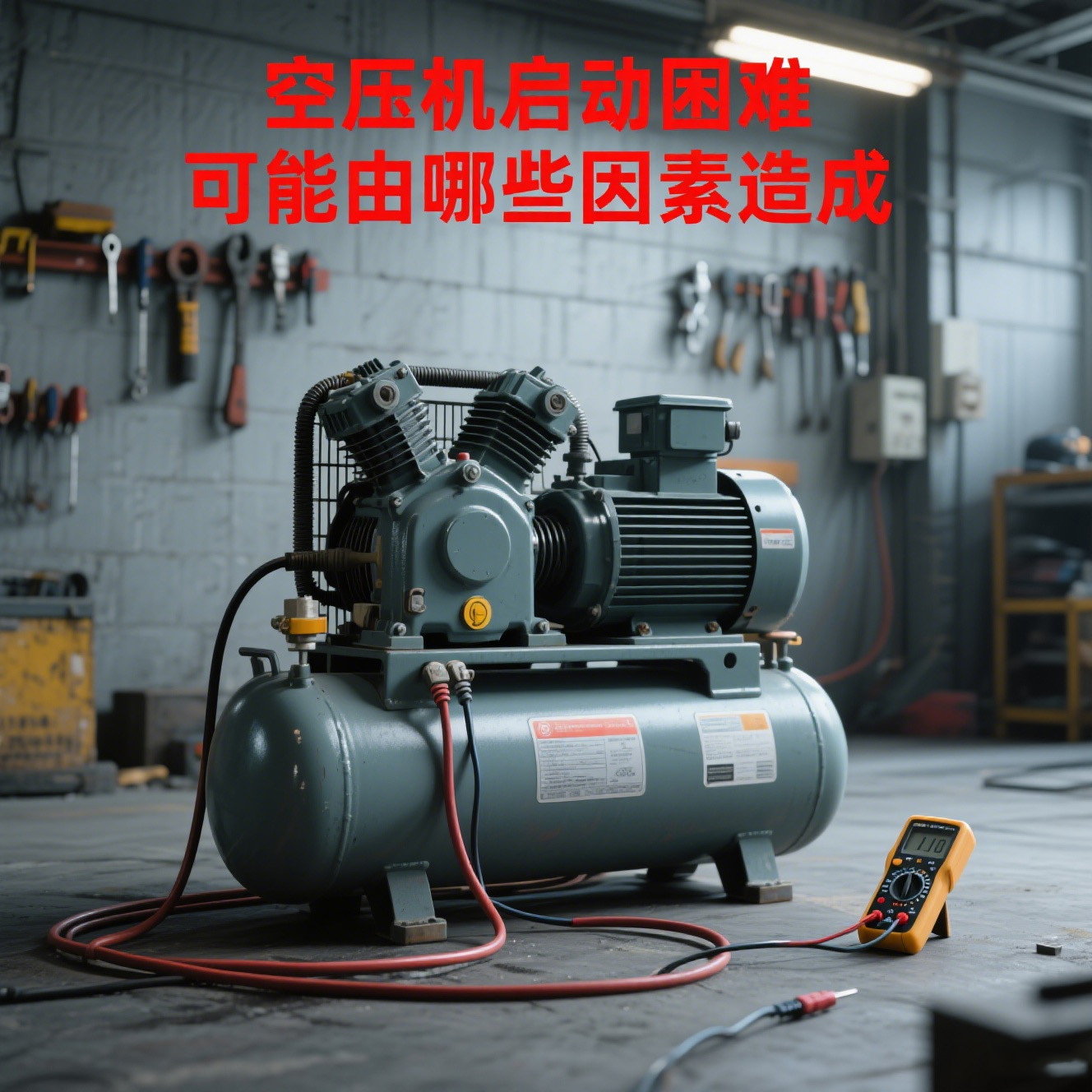Difficulty in starting an air compressor manifests as no response when starting, immediate shutdown after starting, or abnormal noise, all of which are indicative of issues with the equipment’s condition or the environment. Understanding these common causes and troubleshooting methods can help resolve the problem quickly:
Power supply and circuits: Malfunctions in the “power source” for starting
Unstable supply voltage is a common cause. When the voltage is 10% lower than the rated value, the motor’s starting torque is insufficient, resulting in a “buzzing sound but failure to rotate”. This can be confirmed by measuring the socket voltage with a multimeter. Oxidized or loose wire connections can cause poor contact, and the plug may feel hot when touched. Re-tightening or replacing the plug can solve the problem. Additionally, after the motor overload protector trips, it needs to cool down for 10-15 minutes, and the reset button must be pressed before restarting.
Mechanical components: “Seizure” causing startup obstruction
For air compressors that have been out of use for a long time, the piston rings and cylinder block may rust and stick together, and a harsh friction sound will be heard when starting. In this case, do not force the machine to start. Instead, add a small amount of lubricating oil to the air inlet, manually rotate the flywheel a few times to lubricate it, and then try again. Worn bearings or overly tight belts can also increase resistance. If the bearings make abnormal noises, they need to be replaced; if the belt has no elasticity when pressed, the pulley spacing should be adjusted to loosen it.
Pressure system: “Overload” slowing down startup
An easily overlooked issue is the failure to release residual pressure in the air storage tank. If the drain valve is not opened after shutdown, residual pressure of 0.3MPa or more in the tank will make the motor “carry a load” when starting. Before starting, open the exhaust valve first, wait until the “hissing” exhaust sound stops and the pressure returns to zero, then try starting again. When the contacts of the pressure switch are oxidized, it may result in “power on but no startup”. Disassembling the switch and polishing the contacts with sandpaper can restore functionality.
Environment and lubrication: “External interference” affecting startup
Low temperatures in winter can cause the viscosity of lubricating oil to soar, like “frozen honey”, making it difficult for the motor to drive the oil pump. When starting, open the side cover of the equipment and use a hair dryer to heat the oil tank for 5 minutes before starting. Insufficient lubricating oil or deteriorated oil quality will increase friction in the gearbox. If the oil level gauge shows a level below the lower limit or the oil is dark brown, it is necessary to add or replace with the same type of lubricating oil.
Control system: “Incorrect instructions” leading to startup failure
If the control panel displays garbled characters or has no response, the circuit board may be damp. Wiping it with a dry cloth and ventilating to dry it can restore it. Sensor failures can transmit incorrect signals. For example, a temperature sensor falsely reporting high temperatures will cause the equipment to activate a protection mechanism. Replacing the sensor using the substitution method can quickly troubleshoot. When relay contacts are burned, pressing the start button may result in no response, and replacing the corresponding relay will solve the problem.
Don’t panic when encountering startup difficulties. Troubleshoot in the order of “power supply → mechanical components → pressure system → environment → control system”, and combine details such as abnormal equipment noises and instrument displays to quickly identify the root cause.
Post time: Jul-31-2025










